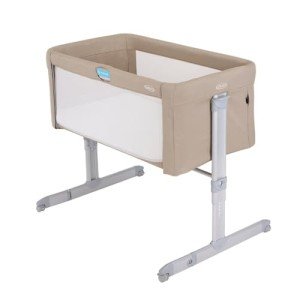Understanding Co-Sleeper Cribs: A Comprehensive Guide for New Parents
In the ever-evolving landscape of infant sleep solutions, co-sleeper cribs have garnered considerable attention amongst new parents. These specialized cribs provide an unique bridge in between co-sleeping and safe sleep practices, providing advantages that resonate with both caretakers and infants. This post looks into the complexities of co-sleeper cribs, detailing their functions, advantages, considerations, and answering common questions to assist parents in making a notified decision.
What is a Co-Sleeper Crib?
A co-sleeper crib, likewise referred to as a bedside sleeper, is a type of crib designed to securely connect or sit beside an adult bed. It permits infants to sleep near their parents without the dangers typically related to adult bed-sharing. These cribs are available in various styles, however a lot of share an essential feature: one side that is lower, allowing easy reach to the baby while keeping them in their own designated sleeping space.
Key Features of Co-Sleeper Cribs
- Safe Attachment: Designed to firmly connect to the adult bed, guaranteeing stability.
- Adjustable Height: Height modification options for smooth positioning beside the adult bed mattress.
- Breathable Mesh Sides: Often equipped with breathable mesh sides to improve air flow.
- Compact Design: Takes up less space than traditional cribs, making them ideal for small rooms.
- Portable Options: Many co-sleeper cribs are light-weight or foldable, enabling easy movement and travel.
Benefits of Using a Co-Sleeper Crib
Co-sleeper cribs present several advantages that interest new parents, including:
- Enhanced Bonding: Proximity promotes bonding and can reduce nighttime feedings and reassuring.
- Simplified Nighttime Feeding: Parents can quickly feed or relieve their baby without requiring to rise.
- Reduced Risk of Bed-Sharing Hazards: Co-sleepers produce a much safer environment than traditional bed-sharing, reducing the danger of suffocation and falls.
- Support of Independent Sleep: Infants have their own sleep space, which promotes independent sleeping practices.
Factors to consider When Choosing a Co-Sleeper Crib
While co-sleeper cribs use lots of benefits, there are likewise several considerations that parents need to examine before buying:
- Safety Standards: Always ensure that the crib follows current safety regulations provided by companies such as the Consumer Product Safety Commission (CPSC).
- Size Compatibility: Measure the adult bed to ensure the co-sleeper will fit safely and easily alongside it.
- Ease of Use: Look for models that assist in easy operation and ease of access, particularly during nighttime.
- Convertible Options: Some co-sleepers offer the versatility to convert into a traditional crib once the kid outgrows them, which can be a cost-effective option.
Top Co-Sleeper Cribs on the Market
To assist browse the abundance of options readily available, here's a table showcasing some popular co-sleeper cribs together with their standout features:
| Brand | Model | Features | Cost Range |
|---|---|---|---|
| Arm's Reach | Suitable Arc Crib | Adjustable height, removable side | ₤ 150 - ₤ 230 |
| Babybay | Initial Co-Sleeper | Made from sustainable wood, includes bed mattress | ₤ 240 - ₤ 300 |
| Chicco | Next2Me Magic | Easy side access, collapsible design | ₤ 200 - ₤ 280 |
| Snuggle Me | Organic Co-Sleeper | Soft, comfortable shapes; portable | ₤ 120 - ₤ 180 |
| HALO | BassiNest | 360-degree swiveling, height-adjustable | ₤ 250 - ₤ 350 |
Tips for Using a Co-Sleeper Crib
- Positioning: Place the co-sleeper beside the bed at the same height level for safety.
- Follow Safe Sleep Practices: Ensure the crib is set up according to standards to minimize threats. This includes preventing loose bed linen and keeping the mattress firm.
- Routinely Check Security: Periodically inspect the attachment between the co-sleeper and the adult bed to ensure it stays protected and stable.
Frequently Asked Questions (FAQs)
1. Are co-sleeper cribs safe?Yes, when
utilized according to the manufacturer's guidelines and security guidelines, co-sleeper cribs are thought about a safe alternative to conventional bed-sharing.
2. Bedside Cot That Attaches To Bed of time can my baby use a co-sleeper crib?Most co-sleeper cribs are developed for infants approximately 5-6 months old, however check specific item requirements for age and weight limits. 3. Do co-sleeper cribs feature mattresses?Many co-sleeper cribs include included mattresses, however validate this before purchase. Guarantee any additional mattress meets security requirements. 4. Can a co-sleeper crib be used for twins?There are co-sleeper cribs created for twins, but these models might be less common. Constantly examine the size and weight limits. 5. Ought to I use a co-sleeper crib for naps?Absolutely! Co-sleepers work well for both nighttime sleeping and naps, supplying a consistent sleep environment for infants. Co-sleeper cribs provide an efficient and safe compromise
for new parents eager to keep their infant close while keeping a safe sleeping environment. By understanding their functions, benefits, and
security factors to consider, parents can make informed decisions that cater to their family's needs. Whether you're searching for convenience during nighttime feedings or a way to construct a strong early bond, a co-sleeper crib may simply be the best option for you and your kid.

